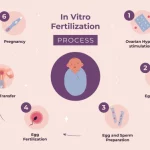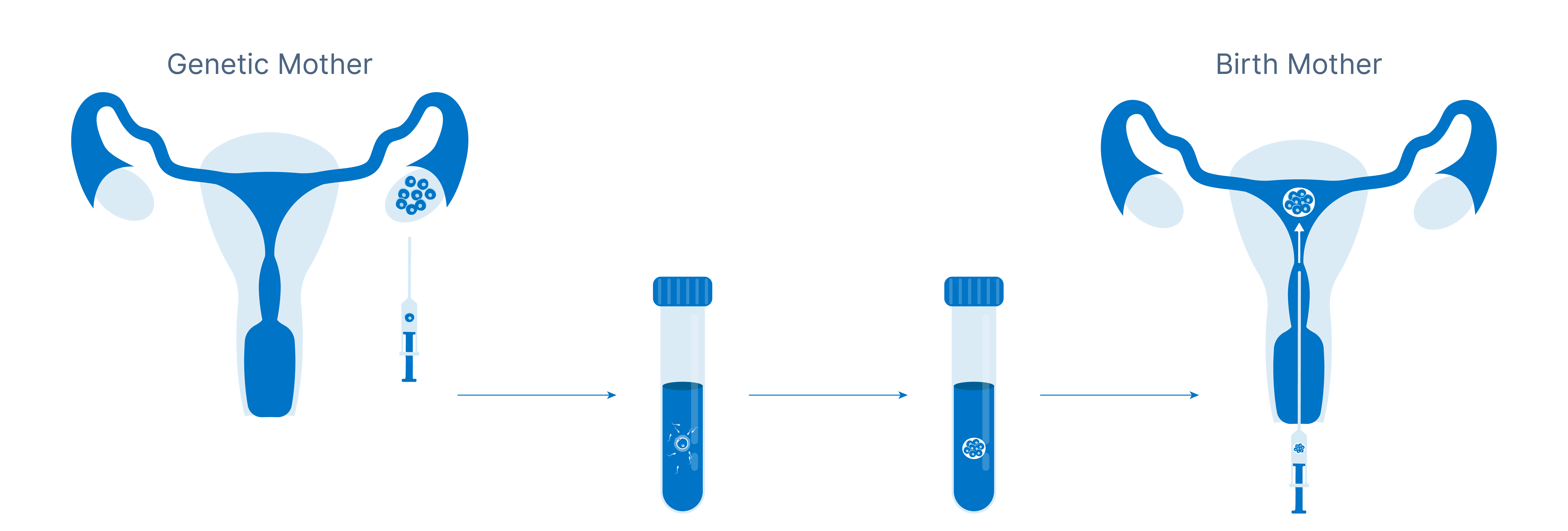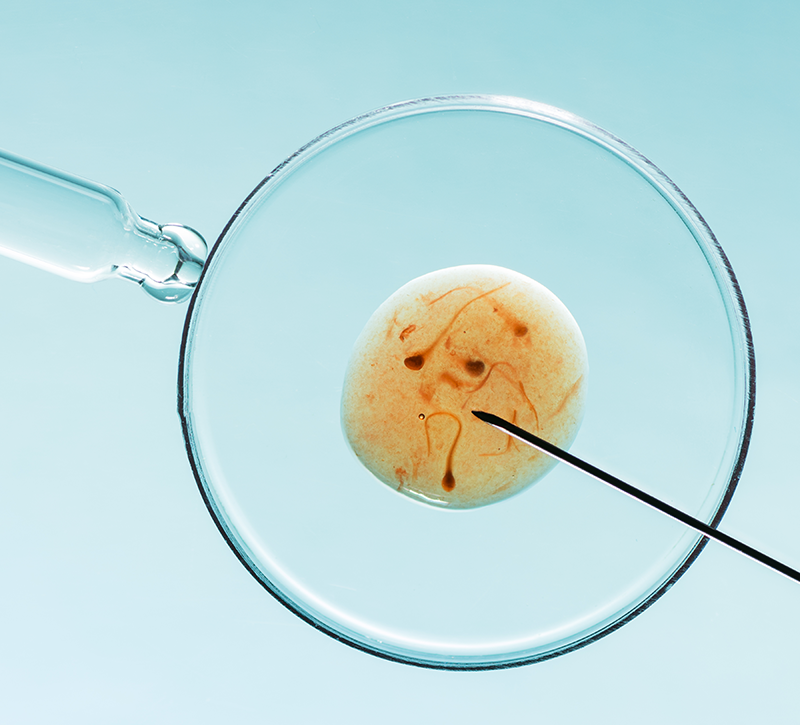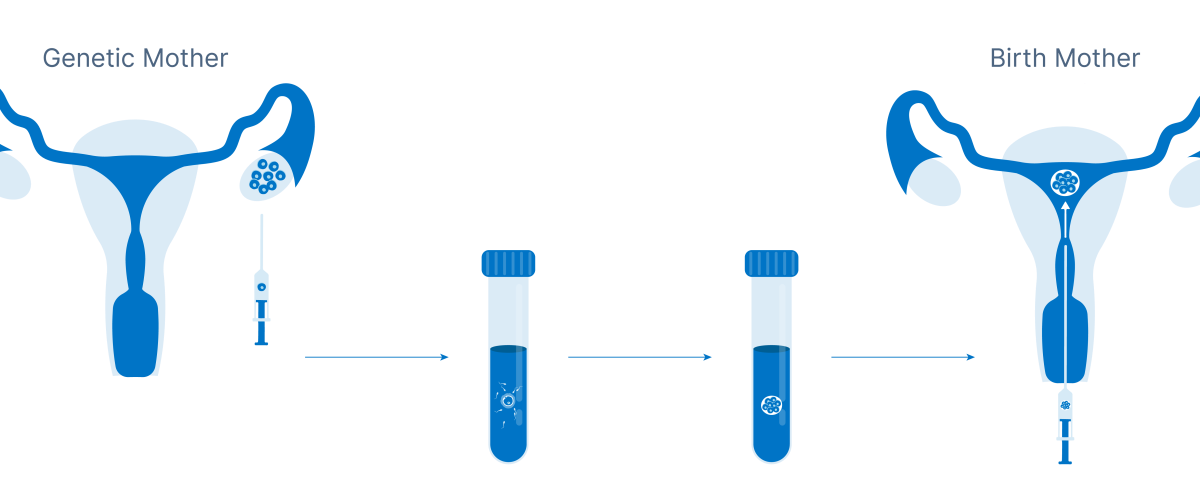
IVF Success Rates: Everything You Need to Know to Boost Your Chances
March 27, 2025Reciprocal IVF: A Deep Dive into a Unique Path to Parenthood
Have you ever wondered how two women in a relationship can both play a big role in bringing a baby into the world? Or maybe you’ve heard whispers about “reciprocal IVF” but aren’t quite sure what it means? Well, you’re in the right place! Reciprocal IVF is a fascinating, heartfelt journey that’s growing in popularity, especially among same-sex female couples and individuals curious about creative ways to build a family. It’s more than just a medical procedure—it’s a story of love, teamwork, and science coming together to make dreams come true.
In this article, we’re going to unpack everything you need to know about reciprocal IVF. We’ll explore what it is, how it works, who it’s for, and even the little-known details—like the emotional rollercoaster, the surprising costs, and the latest breakthroughs that could change the game. Whether you’re thinking about this for yourself, supporting a friend, or just love learning about cool stuff, we’ve got you covered with fresh insights, practical tips, and a peek into real-life experiences. Let’s dive in!
What Is Reciprocal IVF? The Basics Made Simple
Reciprocal IVF, sometimes called “shared motherhood IVF” or “co-IVF,” is a special twist on traditional in vitro fertilization (IVF). In regular IVF, one person’s egg is fertilized with sperm and then placed into their own uterus—or sometimes a surrogate’s. But reciprocal IVF flips the script: one partner provides the egg, and the other partner carries the baby. It’s like a tag-team effort where both people get to be biologically connected to their child in a unique way.
Imagine this: Sarah and Mia want to start a family. Sarah’s eggs are retrieved, fertilized with donor sperm, and then the embryo is transferred into Mia’s womb. Sarah’s the genetic mom (her DNA is in the baby), and Mia’s the birth mom (she carries and delivers the little one). Pretty cool, right? It’s a way for both partners to feel deeply involved in the process, which is why so many couples love it.
Why It’s Different from Regular IVF
- Teamwork: Both partners have a starring role—one donates the egg, the other grows the baby.
- Emotional Bond: It’s not just about biology; it’s about sharing the journey in a way that feels equal.
- Flexibility: It works for couples where one might have fertility challenges but the other can carry a pregnancy.
A Fun Fact Fans Might Love
Did you know some clinics call this “the ultimate partnership procedure”? It’s not just a medical term—it’s a love story written in science! And here’s a quirky tidbit: couples often pick donor sperm together, sometimes joking about finding a donor who matches their vibe—like a shared taste in music or a knack for bad dad jokes.
Who Chooses Reciprocal IVF? More People Than You Think!
Reciprocal IVF isn’t just for one type of person—it’s for anyone who wants to mix love, science, and family-building in a creative way. Let’s break down who’s jumping on board and why.
Same-Sex Female Couples
This is the group you’ll hear about most. For two women in a relationship, reciprocal IVF is a chance to both be part of the baby-making process. One partner might say, “I’ve always wanted to know what pregnancy feels like,” while the other chimes in, “I’d love for the baby to have my genes.” It’s a win-win!
Transgender and Nonbinary Folks
Here’s something not everyone talks about: reciprocal IVF can be a game-changer for transgender or nonbinary individuals too. For example, a trans man who still has ovaries might donate eggs, while his partner (cisgender or otherwise) carries the pregnancy. It’s a way to build a family that fits their identity and dreams.
Couples with Fertility Challenges
Sometimes one partner has healthy eggs but can’t carry a pregnancy (maybe due to a medical condition like endometriosis), while the other has a strong uterus but struggles with egg quality. Reciprocal IVF lets them team up and use what works best.
Single Women with a Twist
Picture this: a single woman with a sister or close friend who’s willing to carry her baby. It’s rare, but it happens! They use the single woman’s eggs and donor sperm, and the friend becomes the gestational carrier. It’s like a family project with extra love.
A Hidden Gem of Insight
A lot of people don’t realize how empowering this can feel. One expert, Dr. Jane Frederick, a fertility specialist, once said, “Reciprocal IVF gives couples a sense of ownership over their story—it’s not just about overcoming obstacles, it’s about creating something together.” That’s a perspective you won’t find in every article!
How Does Reciprocal IVF Work? A Step-by-Step Guide
Ready to get into the nitty-gritty? Let’s walk through the process like it’s a recipe for your favorite dish—except this one makes a baby! Here’s how it goes, step by step.
Step 1: Picking the Team
- Egg Donor Partner: This is the person whose eggs will be used. They’ll need to be healthy and usually under 35 for the best egg quality.
- Carrier Partner: This is the one who’ll carry the pregnancy. They need a healthy uterus, confirmed by tests like an ultrasound.
✔️ Tip: Start with a fertility checkup for both partners to see who’s best suited for each role.
Step 2: Egg Donor Prep
- The egg donor takes hormone shots for about 10-14 days to boost egg production.
- Doctors monitor this with blood tests and ultrasounds—think of it like keeping an eye on cookies in the oven.
- Once the eggs are ready, they’re retrieved in a quick procedure under light sedation.
❌ Don’t Skip: Missing hormone doses can mess up the timing, so set phone reminders!
Step 3: Sperm Selection
- Couples pick donor sperm from a sperm bank. You can choose based on traits like height, eye color, or even hobbies (yes, some donors list “loves hiking”!).
- The sperm is thawed and prepped in the lab.
Step 4: Fertilization Magic
- In the lab, eggs and sperm meet to create embryos. This happens in a petri dish—not a test tube, despite what movies might tell you!
- After 3-5 days, the healthiest embryos are chosen.
Step 5: Embryo Transfer
- The carrier partner gets a simple procedure where the embryo is placed in her uterus.
- No anesthesia needed—it’s like a Pap smear but with a happier ending.
Step 6: The Waiting Game
- About 10-14 days later, a pregnancy test reveals if it worked. Cue the nervous excitement!
A Table to Keep It Clear
| Step | Who’s Involved | What Happens | Timeframe |
|---|---|---|---|
| Egg Prep | Egg Donor Partner | Hormones + egg retrieval | 2-3 weeks |
| Sperm Selection | Both Partners | Choosing a donor | 1-2 days |
| Fertilization | Lab Team | Eggs + sperm = embryos | 3-5 days |
| Embryo Transfer | Carrier Partner | Embryo placed in uterus | 1 day |
| Pregnancy Test | Carrier Partner | Fingers crossed! | 10-14 days |
A Pro Tip from the Field
Some clinics now use “freeze-all” cycles—freezing embryos and transferring them later—to boost success rates. A 2023 study in Fertility and Sterility found this can increase live birth rates by up to 10% for some patients. Cool, huh?
The Emotional Side: What No One Tells You
Reciprocal IVF isn’t just needles and doctor visits—it’s an emotional adventure too. Let’s pull back the curtain on what it really feels like.
The Highs
- Team Spirit: Couples often say it’s like running a marathon together. “We’re in this 50/50,” one partner might say while holding hands during an ultrasound.
- Firsts: Hearing the heartbeat or seeing the egg donor’s traits in the baby (like her dimples) can feel magical.
The Lows
- Pressure: The egg donor might worry, “What if my eggs aren’t good enough?” while the carrier frets, “What if my body fails us?”
- Jealousy: It’s rare, but real—sometimes the non-carrying partner feels left out during pregnancy.
A Secret Struggle
Here’s something you won’t find in most articles: the “waiting period” after the transfer is brutal. One woman described it as “two weeks of holding your breath, overanalyzing every twinge.” Couples often binge-watch shows or bake cookies to stay sane—true story!
How to Cope
✔️ Talk It Out: Share feelings with your partner or a therapist.
✔️ Celebrate Small Wins: Retrieved eggs? High-five! Embryo made? Toast to that!
❌ Don’t Bottle It Up: Ignoring stress can make it worse—let it out.

Costs and Cash: Breaking Down the Price Tag
Let’s talk money—because reciprocal IVF isn’t cheap, and you deserve the full scoop.
The Big Picture
- Average Cost: $20,000-$30,000 per cycle in the U.S., including meds, retrieval, and transfer.
- Extras: Donor sperm ($500-$1,500 per vial), storage fees ($300-$500/year), and pre-tests ($1,000-$3,000).
Why It’s Pricey
- Two people need medical care: one for egg retrieval, one for pregnancy prep.
- Hormones and lab work add up fast.
Hidden Costs Fans Might Dig
- Travel: Some couples fly to top clinics, adding plane tickets and hotel stays.
- Emotional Extras: Therapy or acupuncture to ease stress—$50-$150 per session.
- Celebrity Gossip Tie-In: Rumor has it some celebs (no names!) have spent over $50,000 on reciprocal IVF to keep it hush-hush.
Ways to Save
✔️ Insurance Check: Some states (like New York) mandate fertility coverage—call your provider!
✔️ Grants: Groups like Baby Quest offer $2,000-$15,000 for IVF costs.
❌ Don’t Cut Corners: Skipping tests to save cash could lower your odds.
A Fresh Stat
A 2024 report from the American Society for Reproductive Medicine (ASRM) says costs are creeping up 5% yearly due to demand. But here’s hope: clinics are testing “mini-IVF” protocols with fewer drugs, potentially slashing costs by 20%.
Success Rates: What Are Your Chances?
Everyone wants to know: will it work? Let’s look at the numbers and what they mean for you.
The Stats
- Under 35: 40-50% chance of a live birth per cycle.
- 35-40: Drops to 25-35%.
- Over 40: 10-20%, depending on egg quality.
What Boosts Your Odds
- Young Eggs: Using eggs from a partner under 35 is key.
- Healthy Carrier: A strong uterus (no fibroids or scarring) helps.
- Top Clinics: Success rates vary—some hit 60% with cutting-edge tech.
A New Research Nugget
A 2023 study in Human Reproduction found that reciprocal IVF success rates are slightly higher (3-5%) than traditional IVF for same-sex couples, possibly because both partners are super invested in the process. That’s a detail you won’t see everywhere!
Real Talk
Success isn’t guaranteed. One couple might nail it on the first try, while another needs three cycles. It’s a marathon, not a sprint—so pace yourself.
Risks and Realities: What to Watch For
No journey’s perfect, and reciprocal IVF has its bumps. Here’s what to know.
For the Egg Donor
- Ovarian Hyperstimulation Syndrome (OHSS): Too many eggs can cause bloating or pain—1-5% risk.
- Procedure Risks: Egg retrieval is safe, but there’s a tiny chance of bleeding or infection.
For the Carrier
- Pregnancy Risks: Same as any pregnancy—miscarriage (15-20%) or multiples if two embryos are transferred.
- Hormone Side Effects: Mood swings or fatigue from progesterone shots.
A Rare Twist
Here’s a juicy tidbit: some couples report “phantom symptoms” during the process—like the egg donor feeling pregnant too! Doctors say it’s psychological, but it’s a wild fan-favorite story.
How to Stay Safe
✔️ Pick a Reputable Clinic: Look for board-certified docs with high success rates.
✔️ Monitor Symptoms: Call your doctor if anything feels off.
❌ Don’t Overdo It: Transferring multiple embryos ups risks—stick to one if possible.
The Latest Buzz: What’s New in Reciprocal IVF?
Science is always moving, and reciprocal IVF is no exception. Here’s what’s fresh in 2025.
Genetic Screening Upgrades
- PGS 2.0: Preimplantation Genetic Screening now catches more abnormalities, boosting healthy births by 15%, per a 2024 Nature study.
- DIY Insight: Couples can sometimes peek at results online—talk about high-tech bonding!
Mini-IVF Trend
- Uses lower hormone doses, cutting costs and side effects.
- Early data shows 30-40% success for young patients—promising!
AI in the Lab
- Artificial intelligence is picking the best embryos with 90% accuracy, says a 2024 trial from Stanford. Dr. Aimee Eyvazzadeh, a fertility guru, noted, “AI is like having a super-smart lab assistant—it’s changing the game.”
A Fan-Friendly Future
Imagine choosing a donor based on a 3D avatar or tracking your embryo’s growth via an app. It’s not sci-fi—it’s coming soon!

Real Stories: Voices from the Journey
Let’s hear from folks who’ve been there—it’s the heart of reciprocal IVF.
Jenna and Taylor’s Tale
- Who: A couple from Oregon.
- Story: Jenna donated eggs at 29; Taylor carried at 32. After two cycles, their son Leo arrived.
- Quote: “Seeing my eyes in a baby Taylor grew? It’s unreal.”
Sam’s Solo Spin
- Who: A single woman in Texas.
- Story: Sam used her eggs and her best friend as a carrier. Baby Ella was born in 2024.
- Quote: “It’s like we’re sisters raising her together.”
A Hidden Detail
Couples often keep mementos—like ultrasound pics or donor profiles—in a scrapbook. It’s a sweet, private hobby that ties the journey together.
Practical Tips: Making It Work for You
Ready to take the plunge? Here’s how to rock reciprocal IVF.
Before You Start
✔️ Research Clinics: Compare success rates online—aim for 40%+.
✔️ Budget Smart: Save for at least two cycles ($40,000 total) to be safe.
❌ Don’t Rush: Take time to pick a donor—rushing leads to regrets.
During the Process
✔️ Team Up: Split tasks—one handles meds, the other tracks appointments.
✔️ Self-Care: Yoga or Netflix nights beat stress.
❌ Avoid Google Overload: Too much info can freak you out—stick to your doc’s advice.
After the Transfer
✔️ Rest Easy: Take it slow for a day or two.
✔️ Stay Positive: Plan a fun reveal if it works—like a cake with “Baby On Board”!
❌ Don’t Test Early: Early tests can mislead—wait for the official one.
Myths Busted: Clearing Up Confusion
There’s a lot of chatter out there—let’s set it straight.
Myth 1: It’s Only for Rich People
- Truth: Yes, it’s pricey, but grants and insurance can help. It’s more accessible than you think.
Myth 2: The Baby Won’t Feel “Ours”
- Truth: Both partners are deeply tied—one genetically, one through birth. Love seals the deal.
Myth 3: It’s Riskier Than Regular IVF
- Truth: Risks are similar; it’s just split between two people.
Your Questions Answered: A Quick Q&A
Got questions? We’ve got answers!
Q: Can we use a known sperm donor—like a friend?
- A: Yes, but it’s tricky—legal agreements and health checks are a must. Most stick to sperm banks for simplicity.
Q: What if neither of us can carry or donate?
- A: You can use an egg donor and a surrogate—still reciprocal in spirit, just with extra help.
Q: How do we pick who does what?
- A: Talk age, health, and dreams. Younger eggs and a healthy uterus usually win.
The Bigger Picture: Why It Matters
Reciprocal IVF isn’t just about making babies—it’s about redefining family. It’s a shout-out to love, choice, and science teaming up to break old rules. Whether it’s two moms giggling over baby names or a single woman building her crew, it’s a reminder that there’s no one-size-fits-all path to parenthood.
A Final Thought
Dr. Mark Surrey, a fertility pioneer, once said, “This isn’t just technology—it’s a bridge to dreams people didn’t know they could cross.” That’s the magic of reciprocal IVF.
Let’s Chat: What’s Your Take?
Now it’s your turn! Have you or someone you know tried reciprocal IVF? What’s the wildest thing you’ve heard about it? Drop a comment below—I’d love to hear your stories or questions. And if you’re curious about more family-building adventures, stick around for our next deep dive. What topic should we tackle next? You tell me!
